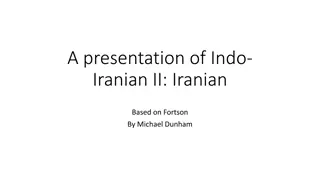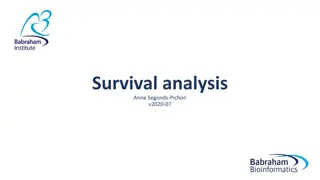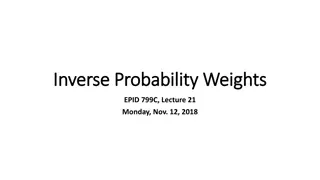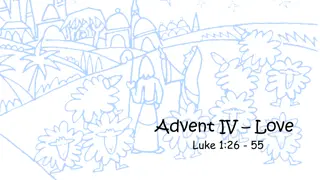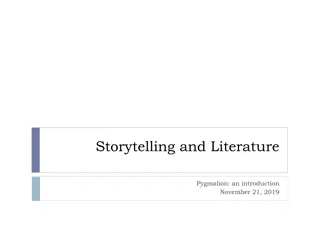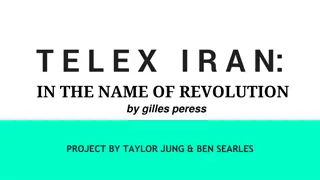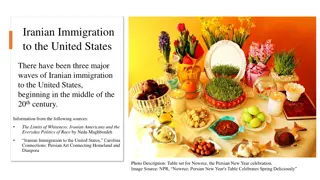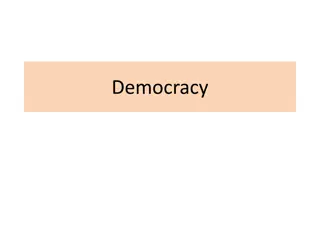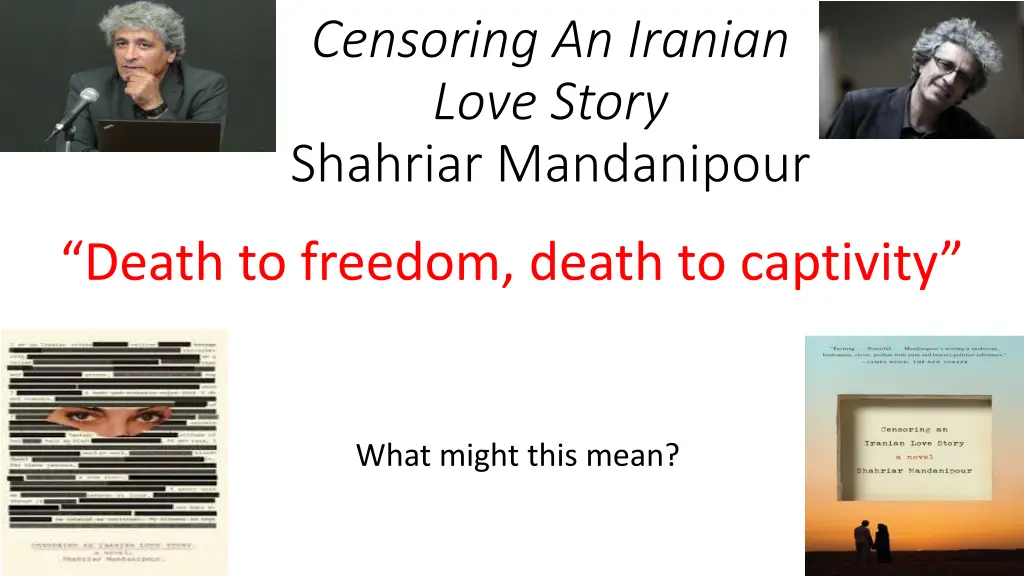
Gender Inequality and Censorship: Exploring Themes in Literature
Explore the connection between censorship, gender inequality, and creative expression in literary works by authors like Shahriar Mandanipour and Soraya Chemaly. Discover how censorship impacts communication, family dynamics, and societal issues, challenging traditional ideologies through self-censorship and resistance.
Download Presentation

Please find below an Image/Link to download the presentation.
The content on the website is provided AS IS for your information and personal use only. It may not be sold, licensed, or shared on other websites without obtaining consent from the author. If you encounter any issues during the download, it is possible that the publisher has removed the file from their server.
You are allowed to download the files provided on this website for personal or commercial use, subject to the condition that they are used lawfully. All files are the property of their respective owners.
The content on the website is provided AS IS for your information and personal use only. It may not be sold, licensed, or shared on other websites without obtaining consent from the author.
E N D
Presentation Transcript
Censoring An Iranian Love Story Shahriar Mandanipour Death to freedom, death to captivity What might this mean?
Under Trump, we are all women Soraya Chemaly The problems we face are so much more than about abortion. The point isn t abortion per se, but the model establishment by a right wing Christian ideology. It s a model of strategies and tactics, arrayed against women s rights during the past fifty years, now being applied more broadly. When public harm is going to be done, perpetuators usually practice first on women and children, to see what society will tolerate. This situation is no different. [ ] Along the way, and via techniques well honed in the battle against women s rights and access to safe and legal abortion, great damage will be done to women, LGTBQ communities, racial, religious and ethnic minorities, immigrants, the economy and the environment. In other words, less palatable words, heterosexual white male supremacy will have politically exerted itself. How do you interpret the connection drawn between censorship and gender inequality in Mandanipour s text?
The currency of silence Censorship has become part of the Iranian discourse of communication. This is why proverbs such as: hefz-e aberu [to save face] Hefz-e zaher [to protect appearances] Ba sili surat-o sorkh negah dashtan [to keep the face red with a slap] Play a central role within Iranian family dynamics, even today.
Self-Censorship Working under censorship is like being intimate with someone who does not love you, with whom you want no intimacy, but who presses himself in upon you. The censor is an intrusive reader, a reader who forces his way into the intimacy of the writing transaction, forces out the figure of the loved or courted reader, reads your words in a disapproving and censorious fashion. Coetzee, J. M., Giving Offence: Essays on Censorship, p.38 If censorship succeeds when language is no longer able to represent or resist the governmental structures that control it, does Mandanipour escape censorship through creative means?
Petrovich and Mandanipour How do you interpret their relationship? What role does Mandanipour play in the text? Does this role remind you of any other literature you have read? What is Petrovich s role in the text?
If on a winter's night a traveler If on a winter's night a traveler Italo Italo Calvino (1979) Calvino (1979) You are about to begin reading Italo Calvino's new novel, If on a winter's night a traveler. Relax. Concentrate. Dispel every other thought. Let the world around you fade. Best to close the door; the TV is always on in the next room. Tell the others right away, "No, I don't want to watch TV!" Raise your voice-- they won't hear you otherwise--"I'm reading! I don't want to be disturbed!" Maybe they haven't heard you, with all that racket; speak louder, yell: "I'm beginning to read Italo Calvino's new novel!" Or if you prefer, don't say anything; just hope they'll leave you alone. How does Mandanipour compare to Calvino? Why might Mandanipour have chosen this style of writing?
Freedom and Unfreedom Draw an image individually or in pairs/small groups to represent what freedom means to you. Now flip it! What is the opposite of your image? Draw what unfreedom means to you. As a pair or small group pick an image which represents how you feel or the one you most prefer and drop it in the middle of the room. Lets discuss what these images might mean or tell us.
Sadia Abbas, "The Echo Chamber of Freedom: The Muslim Woman and the Pretext of Agency" The women s decision to veil very quickly gets manipulated by everyone. (44) the figure of the Muslim woman for whom the metonym is increasingly the veil. The Muslim woman is object of imperial rescue, justification for imperial warfare, Orientalist cipher, target of jihadist violence, and increasingly, the discursive site on which the central preoccupation of our time how do you free yourself from freedom? is worked out. (45)
Sadia Abbas Thesis Agency can be produced out of subordination; choosing subordination can be an exercise of agency; agency is not comprised of acts of resistance but can consist of modes of inhabiting norms. (67) What Muslim women require most is to be freed from our freedom. (70) How do you respond to this argument?
Saras choice between Dara and Sinbad She knows with all her being that she is not willing to repeat her mother s life, to let her youth and dreams be frittered away in the kitchen for the ideal ambition of how best to feed the family, with only hardship on the kitcheny horizon. [ ] Each time she thinks of marrying Dara, all the financial and political difficulties that await her flash before her eyes, and consequently she thinks of Sinbad, [ ] She sees herself with him in the capital cities of Europe, drunk on the beauties and joys that await her there, with all the things that she knows can only be attained with money and Western freedom. (195) What does this tell us about Sara s choice?
Are there moments in the text that examine censorship in the West?
Are there moments in the text that examine censorship in the West? The anti-riot police, armed with the most sophisticated paraphernalia, including stun batons purchased from the West, stand facing the students (1) we will argue whether this is a new conspiracy by the British or the Americans or our own government (231-2) Western participation and complicity in technological instruments to facilitate censorship in Iran, special software that we purchased from a Western country. (141) What purpose does this serve in the text?
Karima Bennoune Your Fatwa Does Not Apply Here: Untold Stories from the fight against Muslim fundamentalism Many wanted the United States to take a long look at its own policies that had promoted fundamentalism whether collaborating with the Saudi government, financing fundamentalist groups in Afghanistan, or violating international law in our own treatment of Muslim majority populations in places like Iraq. [ ] Empowering civil society is not a strategy that has really been tried in combating Muslim extremism. The West has mostly empowered autocrats [ ] [who] have often constrained liberal civil society any way they could because they are more afraid of its democratic spirit than of fundamentalism. (332-3)
Language Displacement Mandanipour discusses picking words which are not only difficult to translate but have also become obsolete. The word vess l, in the ages-old Iranian literature, has many explicit and implicit religious, mystic, amorous and sexual connotations and hence is not really translatable. (57) What effect does this have on the reader? Does it serve to intensify the linguistic distance between the text and its Western reader? Why might Mandanipour have incorporated language such as this when the novel was intended to be published in English?
Proverbialization Amy Motlagh contends that the lines between scholarly writing and memoir are increasingly blurred . Femi Osofisan termed this proverbialization which is a mode of transational explanation which reduces the writer s world to the trado-mythical level and his linguistic universe to the proportions of a museum, if not a prison . Proverbialization in Iranian-American memoirs takes the form of over-explanation of cultural terms geared towards a non-Iranian, though not always American audience.
Mandanipours Awareness Is Mandanipour aware of his position as a cultural translator? How does Mandanipour navigate this position within his auto-fiction?
Political Maneuvering I don t like to interrupt the progress of my story constantly to offer explanations. But it seems I have no choice. Some things, certain actions in Iran are so strange and outlandish that without explaining them it is impossible for an Iranian story to be well understood by non-Iranians. These explanations are also important for young Iranian readers (183). What does this tell us?
Interpreting Censoring an Iranian Love Story Do you agree with the contention that only Iranian readers have the cultural knowledge and familiarity with socio-cultural conditions required to sufficiently interpret Censoring an Iranian Love Story?
Confessional Life Narrative Mandanipour s autofiction is not marketed as a confessional life narrative, therefore it escapes the obligation to connect the narrator s life to historical events in Iran. This is not an auto-historiographic project that aims to reconcile personal memories with historical and cultural representations of Iran. He doesn t agree with tracing the life of an author through a series of nationally significant events such as the 1953 coup, the Islamic Revolution or hostage crisis.
Global Censorship The global nature of censorship is particularly urgent. Then, in September of 2003, the Office of Foreign Assets Control (OFAC), the Treasury Department bureau that monitors transactions with countries under embargo, issued a ruling that informed the U.S.-based Institute of Electrical and Electronics Engineers (IEEE) that "the collaboration on and editing of manuscripts submitted by persons in Iran" was prohibited. What this meant was that the society's journals could only publish articles from Iran (and, by extension, from Cuba or any other embargoed country) if they received them "camera ready" from the authors-no editing or even formatting of the text was permitted. In another ruling later that month, OFAC stated that an U.S. entity could not publish a book written by an Iranian living in Iran because "inherent in the publication of a book are marketing, distribution, artistic, advertising and other services not exempt from" the OFAC regulations. Read more: http://www.wordswithoutborders.org/article/doors-windows-and- the-office-of-foreign-assets-control#ixzz49Tzco3iS
What is the difference? Not long after that suit was filed, Shirin Ebadi, the University of Tehran law professor who won the Nobel Peace Prize in 2003, filed a lawsuit of her own against the Treasury Department and OFAC. After she received the Nobel, Ebadi was approached by several American publishers who, mindful of the huge success of Azar Nafisi's Reading Lolita in Tehran, were eager for her to write a memoir for publication in the United States (a work of the kind she could not possibly publish in Iran). But the project would clearly have been in violation of several aspects of the OFAC regulations. In November, Ebadi wrote an extremely stirring editorial for the Times in which she finally and powerfully asked the question that unmasked the twisted logic underlying OFAC's restrictions on speech: "What is the difference," she wrote, "between the censorship in Iran and this censorship in the United States?" After a long legal battle, Ebadi won and was able to publish her memoir in the United States. Read more: http://www.wordswithoutborders.org/article/doors-windows-and- the-office-of-foreign-assets-control#ixzz49U0KCOm5
In Iran today, generation must speak to generation Shahriar Mandanipour The problem we Iranians have is that there has always been a gap, a great divide, between our generations. The new generation does not learn from the bitter experiences of the older generation and only winds up repeating them. Perhaps the reason for this repetition is the severe censorship that has taken root in Iran. To erase people's memories of their history, each regime that has come to power has immediately set out to change the history books taught in schools and universities. They have banned previously published books from being reprinted and have gone as far as changing the names of streets that the previous regime had named after notable people and important events. Perhaps the reason for this repetition is that independent journals and newspapers have been banned and the older generation cannot convey its own experiences to the next generation. http://www.theguardian.com/commentisfree/2009/jul/03/iran- islamic-revolution-coup\
Intergenerational Learning We Iranians, having lived under the dictatorial rule of kings for twenty-five hundred years, have expertly learned that we should never leave any records or documents behind It is for this reason that the records of our history are often limited to the travelogues of Westerners and reports by Western spies. (13) Sara is studying Iranian literature at Tehran University. However, in compliance with an unwritten law, teaching contemporary literature is forbidden in Iranian schools and universities. (12) What impact does this censorship have on the history of Iran and modern Iranian literary heritage?
Life Narrative Diasporic Iranian women writers often identify their purpose as one of historicizing their subjectivity rather than writing a political manifesto. They seek to redefine the blurred lines between self and other. Can first person life narratives create a space for deconstructive historicization that simultaneously destroy and preserve the position of the author?
Auto-Fiction A term used in literary criticism to refer to a form of fictionalised autobiography. Auto-Fiction combines two paradoxically contradictory styles, that of autobiography and fiction. The self of the author becomes a living thing composed of fictions. The life of the author becomes the novels organising principle. The novel is alive with the author, and in a state of formation. What are the limits and possibilities of auto-fiction? Do you enjoy this style of writing?
Three Typographical Layers 1. Bold text is used for the love story between two subversive young Iranian s named Sara and Dara, this text, it is imagined is approved by the censor. 2. The interior plot is in bold and struck-through, because had it been included it would have made the story too political or sexually charged to be published. 3. Non-bolded story of a frustrated author also named Shahriar Mandanipour, who struggles against a fictive censoring bureaucrat named after Dostoevsky s Porfiry Petrovich from Crime and Punishment. Porfiry Petrovich is a magistrate in charge of investigating murders, and although he only appears sparingly in Crime and Punishment, his presence is constantly felt. In Censoring an Iranian Love Story Petrovich is a censoring bureaucrat from Iran s Ministry of Culture and Islamic Guidance. What is the impact of the three different styles? Why do you believe the author might have employed this style?
Three Typographical Layers of Censorship 1.Bold font / colour font what we feel able to say 2.Struck out/crossed out font what we feel we cannot say 3.Non-bold our internal monologue detailing the struggle over what we wish to say, our personal conflict with censorship.
Islamic Love Story? Mandanipour won novel of the year at the Muslim Writers Awards in 2011. Irfan Akram, the director of the awards explained in an interview that he hoped the organisation would give Muslim writers confidence in their abilities and offer a platform to communicate their experiences and creativity through the power of the pen. How can we interpret this award? What makes this text an Islamic love story?
Love Story? Compare Dara with Sinbad, what do the two men represent? How can we interpret the ending? How do we read Mr Petrovich s desire to marry Sara (290)? Why does Mandanipour desire to write a love story? Does he succeed?
Assassin Stunned, I look at this Dara who is walking out of the dead-end alley and I feel the blade of a knife against my Achilles tendon. (264) Who is the assassin? Why is Dara pursued and under threat? What does this assassin want?
Sara Sara is objectified twice, by Dara but also his antagonist the wealthy bureaucrat Sinbad, who attempts to woo Sara with the privileged double lifestyle that allows him to drink whiskey in opulent Tehran restaurants and bribe prison guards to release Dara. How can we read the fact that his narrative is never crossed out? How can he function seamlessly within the censoring authority?
Male sexual anxieties In the climax to Dara and Sara s love story, Dara finally alone with Sara freezes in a moment of what some interpret as impotence, while Sara embraces her sexuality. Sara raises Dara s hand to her lips and kisses the finger that bears the turquoise stain. A kiss so silent that neither Mr Petrovich nor even I can hear. [ ] He is tongue-tied, and no word or action comes to his mind. (288) Why is Dara stunned into immobility? Why does Dara then say Death to freedom, death to captivity (289)?
Death to freedom, death to creativity These words take us back to the words on Sara s placard in the opening scene of the book. Why are we taken back to the beginning of the novel? Does it highlight the problematized gaze on the political female subject? All of the male characters have projected an image onto her body from Dara to Sinbad, to Petrovich to Mandanipour. Does Sara manage to reject the way in which she is reduced? Does she achieve freedom? Or does she suffer much the same fate as the author?
How can we interpret these lines? And at last, staring at her closed eyes, he opens his lips. (289) She opens her eyes that had been closed to the fantasy of a kiss. She grins. I was inspired This is the wisest and most ironic response that can come from the lips of an Iranian woman. [ ] I am tired. I am very, very tired. (289) What is the significance of crossing out Sara s eyes opening? How do we interpret what Sara says?
Petrovichs Intervention Petrovich falls in love with Sara and wishes to be written into the story so he can meet and marry her. What does this tell us about censorship and it s effect on the narrative and writer? Mandanipour refuses, claiming I can t I have been completely scissored out of this story. I m done in [ ] Listen! Sara wants to speak for herself. (292) How do we read Mandanipour s refusal or inability to write Petrovich s conclusion? Mandanipour seems to be admitting defeat in the project of representing female subjectivity how can we interpret this?
Plenary: Blogging Inspiration Explore the meaning of "Death to freedom, death to captivity". Does Mandanipour escape censorship through creative means? Explore the quest for sexual and political freedom in Mandanipour's text. Examine the meaning of freedom and unfreedom with reference to Mandanipour s text.


